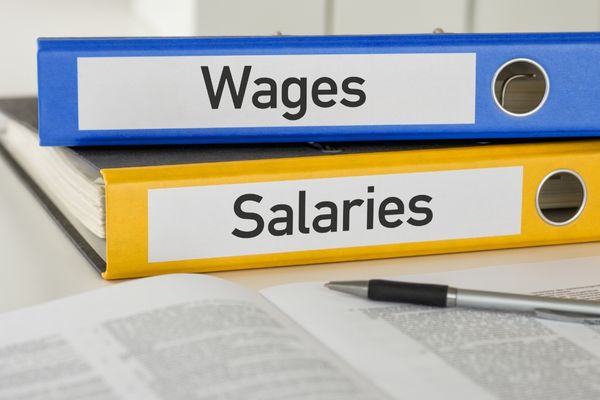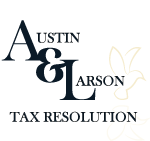Facing an IRS tax levy can be an overwhelming experience. Suddenly, the government has the power to seize your wages, bank accounts, or property to recover unpaid taxes. But the good news is there are legal ways to stop a tax levy in its tracks. Understanding your rights, responding promptly to IRS notices, and exploring available relief options can help you regain control of your finances before serious damage is done. Whether you’re dealing with a pending levy or already under enforcement, this guide will walk you through the practical steps to halt the process and seek resolution. Acting quickly can make all the difference when it comes to protecting your income and assets.

Understanding a Tax Levy
A tax levy is the actual seizure of property to satisfy a tax debt. It’s the IRS’s strongest enforcement method after other attempts to collect unpaid taxes have failed. While a lien claims legal interest in your property, a levy results in the actual confiscation of property or funds.
Common types of tax levies include:
- Wage garnishments: Direct withholding from your paycheck
- Bank levies: Freezing and extracting money from checking or savings accounts
- Property seizures: Taking ownership of physical assets, including vehicles or real estate
- Federal payment offsets: Withholding Social Security benefits or federal retirement payments
Understanding The Process Of A Tax Levy
The IRS does not impose a tax levy overnight. It follows a clearly defined, step-by-step process designed to give taxpayers ample warning and an opportunity to resolve their debt before any enforced collection begins. If you’ve received notices from the IRS or suspect you owe back taxes, understanding how the levy process unfolds can help you avoid asset seizures, wage garnishments, or frozen bank accounts. Below is an overview of the key stages involved:
1. Assessment of tax debt
The process starts with the IRS determining that a tax debt exists. This may result from a filed tax return showing a balance due or an IRS audit identifying unpaid taxes. The agency officially records the amount owed, which includes penalties and interest.
2. Notice and Demand for Payment
After assessing the debt, the IRS sends a formal notice, typically titled “Notice and Demand for Payment.” This is your first official communication from the IRS stating the amount due and requesting immediate payment.
3. Failure to respond or pay
If you do not pay the full balance or make arrangements (such as an installment agreement), the IRS considers the debt unresolved. Continued inaction may lead the IRS to pursue enforced collection.
4. Notice of Intent to Levy
Before taking your property, the IRS must issue a “Final Notice of Intent to Levy and Notice of Your Right to a Hearing.” This is your last opportunity to act before the IRS can legally seize assets like wages, bank accounts, or property.
5. Right to a hearing
You have the right to request a Collection Due Process (CDP) hearing with the IRS Office of Appeals. This hearing gives you a chance to dispute the levy, propose alternative payment solutions, or prove that the levy would cause undue hardship.
You’ll typically receive IRS Letter 1058 or Notice LT11, both serve as the “Final Notice of Intent to Levy” and inform you of your CDP rights. From the date on the notice, you have 30 days to respond. Acting within this window is critical to protecting your rights and assets.
While the IRS levy process is serious, it is not immediate. Timely action, informed decisions, and professional guidance can often prevent the situation from escalating.

Property That May Be Targeted by an IRS Tax Levy
When you owe back taxes and fail to resolve your debt with the IRS, the agency can initiate a tax levy, a legal seizure of your property to satisfy the unpaid balance. This aggressive action follows repeated notices and warnings. A tax levy is different from a lien, a lien is a legal claim, whereas a levy is actual seizure. Once a levy is enforced, the IRS can legally take a wide range of your personal or business assets.
Types of Property the IRS Can Seize
The IRS has broad authority under federal law to target a variety of assets. This means both personal income and physical property can be affected. Here are the common assets the IRS can legally seize:
- Wages and Commissions (Wage Garnishment): Your employer will be ordered to withhold a portion of your paycheck and send it directly to the IRS. This continues until your debt is paid or a resolution is made.
- Bank Accounts: The IRS can freeze your checking and savings accounts, taking available funds after a short holding period.
- Social Security and Pension Payments: Up to 15% of your Social Security benefits may be levied. Pension distributions may also be partially or fully seized.
- Cars, Boats, and Homes: The IRS can seize and sell personal vehicles, boats, or even your primary residence under specific conditions.
- Accounts Receivable or Rental Income: If you’re a business owner or landlord, the IRS can intercept payments that are due to you.
- Business Assets and Licenses: Business property, equipment, inventory, and even licenses to operate can be seized or revoked.
End Conditions for a Tax Levy
Fortunately, a tax levy is not necessarily permanent. Several paths exist to halt or reverse this action, depending on your circumstances and willingness to cooperate. The levy will generally remain in place until one of the following occurs:
- The Tax Debt Is Paid in Full: Once the outstanding balance, including penalties and interest, is paid completely, the levy is automatically lifted.
- An Alternative Arrangement Is Reached: The IRS may agree to stop the levy if you qualify for and enter into a payment plan, installment agreement, or an Offer in Compromise.
- The Levy Is Released Due to Hardship or Appeal: If the levy creates significant economic hardship like being unable to pay for basic living expenses, you may request a levy release. You can also appeal the levy action and potentially have it reversed.
- The Statute of Limitations Expires: Generally, the IRS has 10 years from the date of assessment to collect taxes. If the statute of limitations expires and no legal extension is in effect, the levy must be released.

How To Stop a Tax Levy
A tax levy can have serious financial consequences, but it’s possible to stop it by acting quickly and strategically. If you’re facing the threat of a levy from the IRS, here are your main options for stopping it and regaining financial control.
Pay the Tax Debt in Full
Paying off your tax debt completely is the fastest and most direct way to remove a levy. Once the debt is satisfied, the IRS will lift all levy actions.
Key considerations:
- Ends IRS collection activity immediately once processed
- Prevents further interest or penalties from accumulating
- May be funded through personal savings, loans, or asset liquidation
- Offers peace of mind and a clean financial slate
Request a Collection Due Process (CDP) Hearing
If you’ve received a Final Notice of Intent to Levy, you can request a CDP hearing by filing the appropriate form. This temporarily halts any levy while the hearing is being scheduled and reviewed.
At the hearing, you can:
- Dispute the amount of tax the IRS claims you owe
- Request a payment plan or alternate resolution
- Present documentation showing financial hardship
- Argue that the IRS made a procedural error in its process
Benefits of a CDP hearing:
- Delays enforcement while your case is considered
- Gives you a formal platform to present your side
- May result in resolution through negotiation or appeal
Negotiate an Installment Agreement
If paying your full tax bill at once isn’t realistic, you can ask the IRS for an installment agreement. This allows you to make manageable monthly payments over time.
Types of installment agreements may include:
- Simple monthly payments for small debts
- Streamlined plans that don’t require detailed financial statements
- Partial payment options where full repayment isn’t feasible
Advantages of this option:
- Prevents or ends levy actions once approved
- Lets you address your debt gradually without major disruption
- Keeps you in good standing as long as payments are made on time
Submit an Offer in Compromise (OIC)
An Offer in Compromise gives you the chance to settle your tax debt for less than what’s owed. The IRS reviews your financial situation and may accept a reduced amount as full payment.
To qualify, the IRS looks at:
- Your income and necessary living expenses
- The value of your assets and property
- Your overall ability to pay the full debt
Reasons to consider this:
- Stops levy actions while your offer is under review
- Could significantly reduce the amount you owe
- Offers a clean break if accepted and all terms are met
Claim Financial Hardship
If a tax levy would make it impossible for you to cover basic living costs, you may be deemed “Currently Not Collectible.” This status pauses collection efforts, including levies.
To request hardship status, you’ll need to:
- Submit a full report of your income and necessary expenses
- Provide documents showing financial strain
- Stay current on any new tax filings while in this status
Key facts:
- The IRS won’t pursue collection while your case is in this status
- The debt remains, but enforcement is paused
- Your situation may be reviewed periodically for changes
File for Innocent Spouse Relief
If your tax debt is the result of mistakes or omissions made by a spouse or former spouse on a joint return, you may qualify for relief. This could stop the IRS from collecting from you personally.
You may qualify if you:
- Can prove you didn’t know about the tax issue when filing
- Believe it would be unfair to hold you responsible
- File the proper form requesting relief with supporting evidence
Relief may provide:
- Protection from tax levies tied to a partner’s errors
- Financial separation from joint tax obligations
- Peace of mind in cases of divorce or separation
By understanding these options and acting swiftly, you can stop a tax levy and regain control over your finances. Choosing the right strategy depends on your unique situation, so consider speaking with a tax professional to guide you through the process.
Seek Legal Guidance
Each of these strategies has specific requirements, deadlines, and paperwork. Making the wrong move or missing a deadline can prolong your situation or even make it worse.
Consider speaking with a qualified legal or tax professional:
- To evaluate which option best fits your situation
- To ensure all filings and appeals are submitted correctly
- To advocate on your behalf during IRS communications
Tax levy situations can be stressful and complex. Getting trusted legal advice can give you confidence and clarity as you work toward resolution.
Conclusion
An IRS tax levy is one of the most aggressive tools the government can use to collect unpaid taxes, but it’s not the end of the road. Understanding the levy process, your rights as a taxpayer, and the available relief options can empower you to act swiftly and strategically. Whether you’re just receiving notices or already under enforcement, the key is to respond quickly. Options such as paying the debt in full, setting up a payment plan, requesting a hearing, or applying for hardship status can help you avoid or stop a levy. In some cases, you may even qualify to settle for less than you owe through an Offer in Compromise. Seeking guidance from a tax professional can ensure you make the best decisions and avoid costly mistakes. The sooner you act, the more control you’ll have over your financial situation.
FAQs
How do I stop an IRS tax levy quickly?
Paying your tax debt in full is the fastest way to stop a levy. Once paid, the IRS will release the levy and stop collection efforts.
What happens if I ignore the IRS Final Notice?
If you don’t respond within 30 days, the IRS can legally seize wages, bank funds, or property. Ignoring it removes your right to appeal.
Can I stop a levy without paying everything upfront?
Yes. You can request an installment plan or submit an Offer in Compromise to settle for less and stop the levy once approved.
Will the IRS levy my Social Security benefits?
Yes, they can take up to 15% of your monthly benefits. Relief options may stop the levy if you qualify.
What if the levy causes financial hardship?
You can request “Currently Not Collectible” status, which pauses IRS collection if you can’t afford basic living costs.


Recent Comments